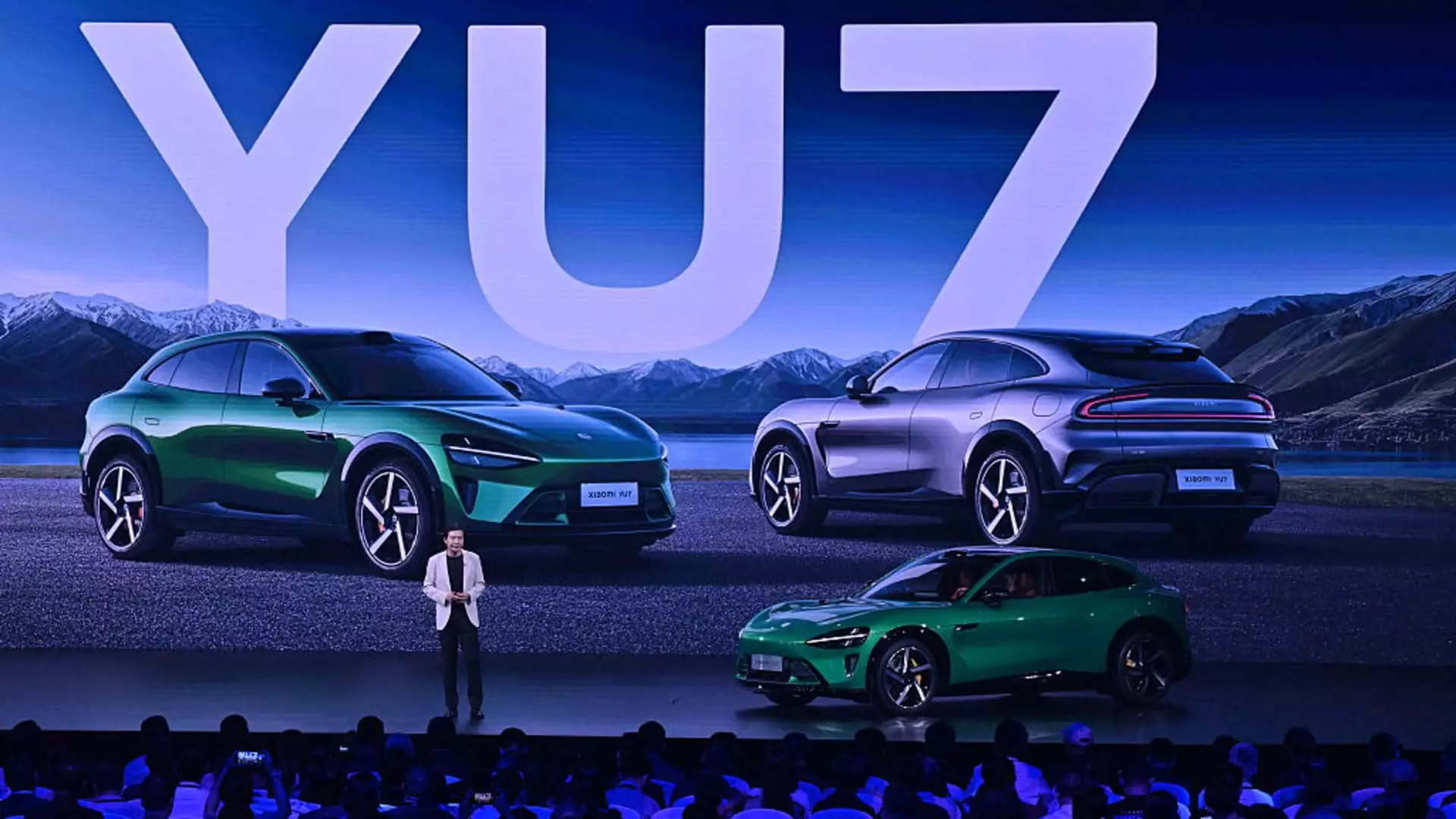China’s rapidly evolving electric vehicle (EV) landscape has reached a crucial juncture as Xiaomi, a titan primarily known for its consumer electronics, sets its sights on taking a bite out of Tesla’s market share. This foray appears ambitious, particularly in a country where EVs have become the cornerstone of automotive innovation. With the recent unveiling of the YU7 SUV—boasting an impressive range of 760 kilometers—Xiaomi’s claim to challenge Tesla’s supremacy seems bold. However, underneath its ambitious exterior lies a web of competitive pressures and market realities that might complicate this narrative.
The Driving Range Dilemma: A Double-Edged Sword
Xiaomi’s YU7 boasts a driving range of 760 kilometers, surpassing Tesla’s Model Y, which is advertised at 719 kilometers. While this feature will undoubtedly attract range-conscious consumers, it also puts Xiaomi directly in the spotlight concerning reliability and performance. The electric driving range has long been a marketing savior for enthusiasts seeking ease and independence from charging infrastructure. However, achieving these exaggerated ranges is often fraught with challenges. With the YU7’s performance still under scrutiny, any discrepancies between promised stats and real-world performance could quickly tarnish Xiaomi’s reputation as a credible player in the EV arena.
Pricing as Strategy: A Risky Balancing Act
Xiaomi plans to price the YU7 between 250,000 and 320,000 yuan, crafting a position that directly battles Tesla. While this might appear advantageous, given its proximity to the price of the Model Y, this pricing strategy carries significant risk. The Chinese market has become a battleground of aggressive pricing wars, with homegrown brands like BYD continually lowering their stickers without sacrificing quality. Xiaomi must ensure it provides exceptional value for a vehicle priced similarly to an established competitor like Tesla, while also delivering on quality and features—a combination that is increasingly difficult to navigate.
Market Sentiment: Can Xiaomi Shift Consumer Trust?
Consumer perception has immense power in the automotive industry, particularly in China, where ideals of luxury, reliability, and innovative technology are paramount. Tesla has carved a niche as a luxury brand prioritizing high performance and cutting-edge features. Xiaomi’s prior successes in smartphones may not translate seamlessly to the EV sector. Transitioning consumer trust from a technology brand to an auto manufacturer takes time, and skepticism can be a dangerous foe. Xiaomi must not only clear the technical hurdles but also change the narrative around its brand in the automotive space, or face potential backlash.
Competitive Landscape: The Giants Awaken
The current EV market isn’t just Tesla versus Xiaomi; it’s a multitude of significant players moving and shaking the industry. BYD’s aggressive pricing strategies and legacy, alongside the emergence of startups like Xpeng, make for a deliciously complex environment. With BYD already dominating sales with the Seagull model and Xpeng set to release upgraded versions of their cars, Xiaomi is entering a fray that has little room for error. The battle is not just about having a compelling product—it’s about continuously outmaneuvering an increasingly diverse array of competitors.
Regulatory and Safety Concerns: A Cloud Overhead
Since the tragic accident involving an SU7 vehicle, Xiaomi has been thrust under regulatory scrutiny, forcing them to tread carefully in their marketing and product safety assurances. This cloud casts a shadow over the YU7’s launch, potentially affecting public opinion before it even hits the roads. The heightened expectations surrounding modern driver-assist technologies must align not only with regulatory demands but also with consumer expectations for safety—an area where any misstep could hamper acceptance.
In essence, though Xiaomi’s ambitions in the electric vehicle market display promise, they must navigate a complex matrix of consumer expectation, competitive rivalry, and regulatory scrutinies. Whether they can transform their technological prowess into automotive success remains to be seen, but the road ahead is undeniably fraught with challenges.

